Table of Contents
Introduction
Poultry farming has been one of the fastest-growing farm businesses in the world, offering farmers a regular income and consumers a guaranteed availability of fresh meat and eggs.
As compared to traditional livestock rearing, chicken rearing consumes less land, less investment, and quicker returns, and therefore is an ideal choice for rural and semi-urban entrepreneurs.
With growing demand for healthy protein food still remaining high, people are setting out in search of a sustainable chicken farm near me to meet their daily nutrient needs. This growing demand has motivated most small and large-scale farmers to start their own chicken farm enterprises.
Starting a poultry farming enterprise, however, is not simply buying chicks and feeding them. Proper planning, good management, and clear policy for long-term sustainability are required.
Farmers must be knowledgeable on poultry types, housing systems, feeding practices, disease control, and marketing to make the business sustainable. Whether you are a new or experienced poultry farmer looking to expand, understanding the right methods can be the difference between profit and loss.
In this blog here, we will be covering 6 effective means of expanding your chicken farm as well as walk you through how to locate the best poultry farm near me for inspiration, learning, or business opportunity.
Advantages of Poultry Farming
Poultry Farming as an Effective Business Model
One of the most significant advantages of poultry farming lies in its profitability compared to the majority of other agriculture undertakings.
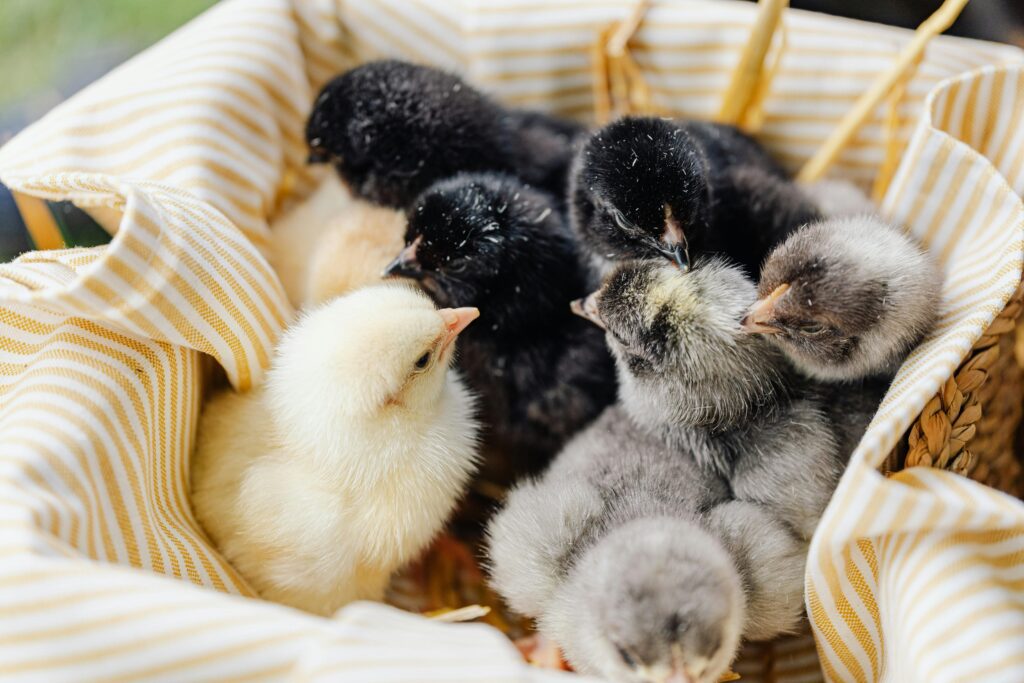
Setting up a chicken farm requires comparatively lower capital, and farmers can expect quicker returns from the aspect that short production cycles lead to quicker delivery of the produce.
Broiler chickens, for example, attain market weight after six to eight weeks, meaning farmers have a chance to dispose of them in large quantities at regular intervals. This is making poultry farming the most suitable business for individuals who seek a constant flow of income every day of the year.
In addition, poultry commodities like eggs and meat always have a market so that it is possible to have a market in hand. Most entrepreneurs even find the best poultry farm near me to learn how well-established farmers operate their farms and learn how they can acquire knowledge on updated business practice.
With a focus on efficient farm management, planned feeding, and marketing, poultry farming can progress as a sustainable and highly rewarding profession.
Contribution to Food Security and Nutrition
The second most important contribution of poultry farming is the establishment of food security. With the world population growing, cheap protein sources have become highly sought after.
Poultry feed, particularly chicken flesh and eggs, are not only protein-rich but also come equipped with essential vitamins and minerals to ensure well-nourished meals. When compared to other livestock farming, poultry can produce food quickly and in larger amounts.
When one searches for a chicken farm that produces poultry close to me, they are looking for fresh, locally produced chicken and eggs to be their family’s source of nutrition.
In keeping a healthy and well-managed chicken farm, farmers help bridge the supply-demand gap while playing a crucial role in public health. Thus, poultry farming is not merely a business opportunity but also a way of enriching society with healthier, protein-rich meals.
Employment and Rural Development
Poultry farming also acts as an efficient rural employment and economic development stimulus. A well-managed chicken farm is capable of providing jobs for surrounding communities from caretakers and feed providers to transporters and retailers.
This favors many people outside the farm. Besides that, poultry farming requires less land compared to beef or goat farming, making it viable even in semi-urban and rural configurations where land is limited.
In addition to that, as more people seek the closest poultry farm near me, they are also helping local farmers and rural economies. Therefore, poultry farming not only makes the owner of the farm money but also enhances the livelihood of the laborers and surrounding industries.
It is such a potential of the industry to generate several employment opportunities that it is a significant factor in rural development and poverty reduction.
Flexibility and Scalability of Chicken Raising
One peculiar benefit of chicken raising is that it is scaleable or scalable. A person can start small, with a few birds, and scale up over a period of time to a large commercial broiler farm. This adaptability enables poultry farming to reach farmers across different income levels and geographical positions.
From rural household farming to computer-based commercial farms in urban areas, poultry farming can be made to fit different farmers. Some people who begin small poultry units end up expanding later after gaining knowledge of larger operations by consulting a poultry farm near me.
Apart from that, poultry farming can also be done in specialization—some farmers specialize in broilers for meat purposes while others handle layers for egg purposes. This flexibility enables the business to adapt with the demands of the market, thereby making it a long-term sustainable business.
Techniques: 6 Powerful Ways to Grow Your Chicken Farm
1. Selecting the Correct Poultry Breeds
The first step towards establishing a successful chicken farm is choosing the right poultry breeds. This depends highly on whether producing eggs, producing meat, or both is the priority. Broilers are fast-growing birds for use as meat, while layers are best suited for egg production.
There are some farmers who use dual-purpose breeds to satisfy both demands. Proper breed choice ensures increased productivity, reduced mortality rates, and increased profitability.
Most newcomers prefer to search for a poultry farm near me so they can observe what works and does not work in their home climate and environment.
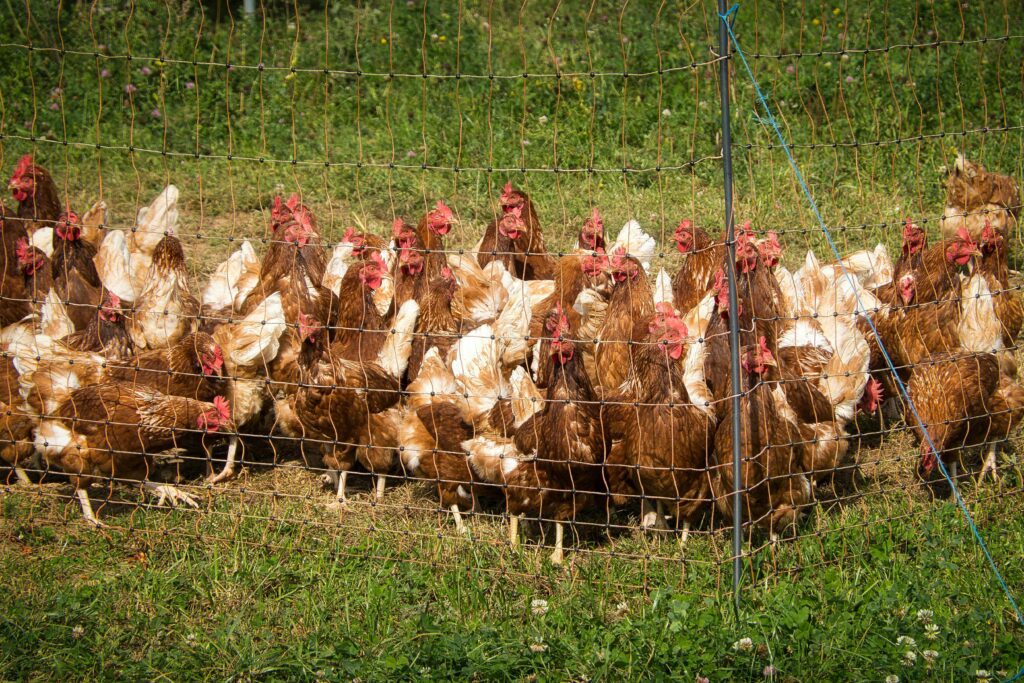
Familiarity with local demand is also necessary—e.g., some markets like the local native chicken breeds because of flavor, while others require commercial hybrids.
Investing in the right breeds increases poultry farming efficiency and sustainability and makes it simpler for farmers to adapt to prevailing market demand.
2. Building Proper Poultry Housing Systems
Proper poultry housing is one of the key factors that determine success in poultry farming. A good chicken house should provide proper ventilation, temperature control, lighting, and protection from predators.
Poor quality housing will lead to stress in poultry birds, which will further result in low egg production and meat quality. Deep litter systems, cage systems, and semi-intensive models are used in modern poultry housing, each with advantages depending on the size of the farm and the objective.
An inspection of the poultry farm within my surroundings can give farmers firsthand experiences on efficient designs of houses that reduce the risk of diseases and raise productivity.
An effectively planned poultry housing system not only ensures the birds’ comfort but also reduces labor expenses by enhancing feeding, cleaning, and egg collection effectiveness. Good housing design is ultimately a foundation of any successful chicken farm.
3. Supplying Nutritious and Balanced Feeding
Feeding is a critical function that directly impacts growth, egg laying, and profitability in poultry farming. A balanced diet should comprise proteins, carbohydrates, fats, vitamins, and minerals for the flock’s health. Farmers minimize feed formulation and therefore obtain lower productivity.
Broilers, for example, need high protein content so that they grow fast, while layers need to be fed calcium-rich diets to provide them with hard eggshells. To cut on expenses, the majority of farmers mix commercial feeds with local grains or supplements.
Those who wish to increase production learn from a poultry farm close to me how to do feeding specific to their breed and region. Since feed can constitute up to 70% of total costs on a chicken farm, nutrition management must be properly performed so that profit is maximized and the health of birds is ensured.
4. Practicing Good Biosecurity and Disease Control
Biosecurity is a crucial pillar of chicken farming since diseases may kill an entire flock of birds in a matter of days if effectively not controlled.
Farmers need to maintain high standards of hygiene, including disinfecting poultry houses, controlling visitor traffic, and immunizing birds against common diseases like Newcastle disease or avian flu.
A safe chicken farm keeps both poultry and consumers safe since healthy poultry produces good eggs and provides quality meat. It is common for most starter farmers to visit a nearby poultry farm to observe firsthand disease control practices and vaccination procedures.
Apart from vaccines, preventive measures such as safe disposal of wastes, regular health checkup, and supply of clean water significantly reduce losses. Investment in biosecurity may be costly initially, but it is far more economical than dealing with widespread outbreaks of disease.
A healthy flock forms the nucleus of profitable poultry farming.
5. Technology and Automation in Poultry Farming
Technology today has become a powerful force in favor of new poultry farming. There are automatic feeders, water dispensers, heaters, and egg pickers that make farming efficient. They reduce labor, improve the precision of feeding, and ensure consistency in production.
For example, smart monitoring devices can track the health of birds, feed intake, and egg laying in real-time to allow farmers to respond immediately to changes. The majority of contemporary chicken farms use automation technology to scale their operations while maintaining bird welfare.
Farmers looking for opportunities typically search for a poultry farm near me that uses technology to find out how to apply these technologies in their farms.
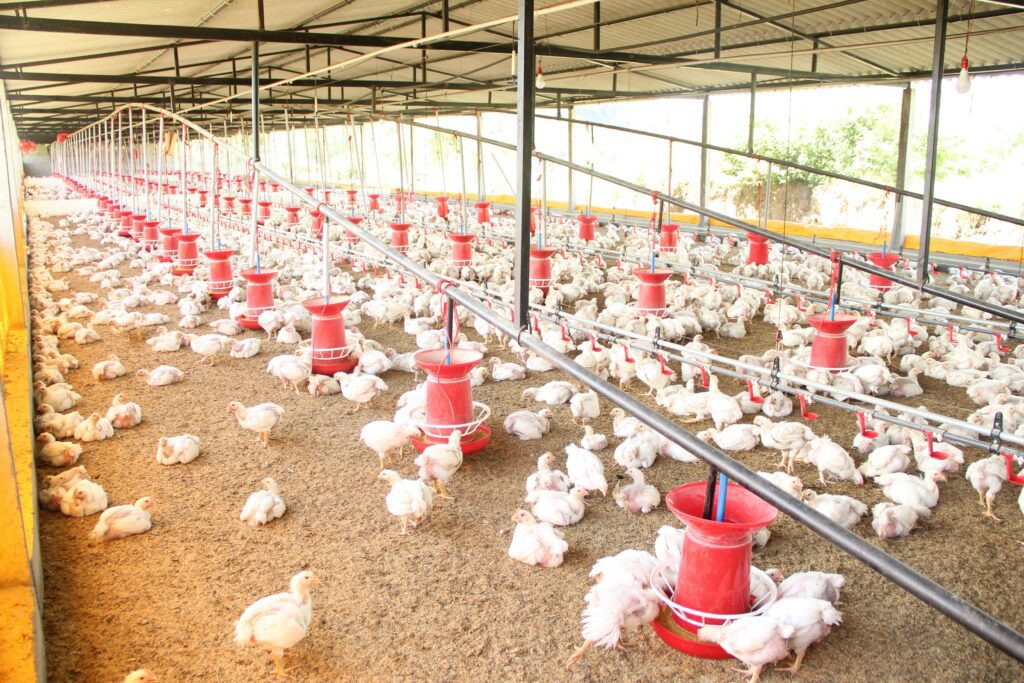
Through the implementation of automation, farmers are able to enhance productivity, reduce wastage, and increase business while ensuring high levels of hygiene and efficiency.
6. Establishing Effective Marketing and Sales Strategies
Regardless of how well a chicken farm is run, profits will rely on the sale of eggs and meat at the correct price. Successful farmers take time to build marketing strategies that directly link them to consumers, retailers, or wholesalers.
Local stores, restaurants, and websites are offering multiple avenues of sales. Customers are searching for a poultry farm near me in order to buy fresh and clean poultry products, thereby increasing farmers’ customer base.
Branding also plays an essential role; farms dealing in organic, antibiotic-free, or free-range chicken are likely to fetch high prices. Farmers can also explore bulk contracting with hotels or caterers to ensure steady returns.
If efficient production is coupled with smart marketing, poultry farming can be built from being a small business to being a large-scale, profitable business.
Limitations of Poultry Farming
High Disease Risks and Mortality
Poultry farming’s greatest limitation is the constant threat of diseases. These pathogens, such as avian influenza, Newcastle disease, and fowlpox, have the tendency to spread very rapidly across flocks, which results in high mortality.
Compared to larger livestock, chickens are very sensitive to minor changes in their environment, and therefore disease control is critical. A farmer who invests heavily in a chicken farm can suffer worst-case losses if preventive health is neglected.
Most small-scale farmers like to seek out a poultry farm near me so that they can observe for themselves the vaccination program and biosecurity practices employed by high-performing farms.
The cost of treatment, along with the possibility of losing an entire flock, makes disease outbreaks one of the most serious problems confronting the poultry industry. Farmers must take the lead in adopting health practices to lower these risks.
Rise in Feed Prices and Supply Issues
Feed is the biggest individual expense in chicken farming, which accounts for nearly 60–70% of total cost of production. Prices of maize, soybean meal, and other critical ingredients continuously fluctuate due to market forces and seasonal trends.
For a farmer who owns a chicken farm, these cost fluctuations might severely cut into profit margins. Feed prices will increase at a higher percentage rate than poultry product prices in most scenarios, and small farmers will not be able to compete.
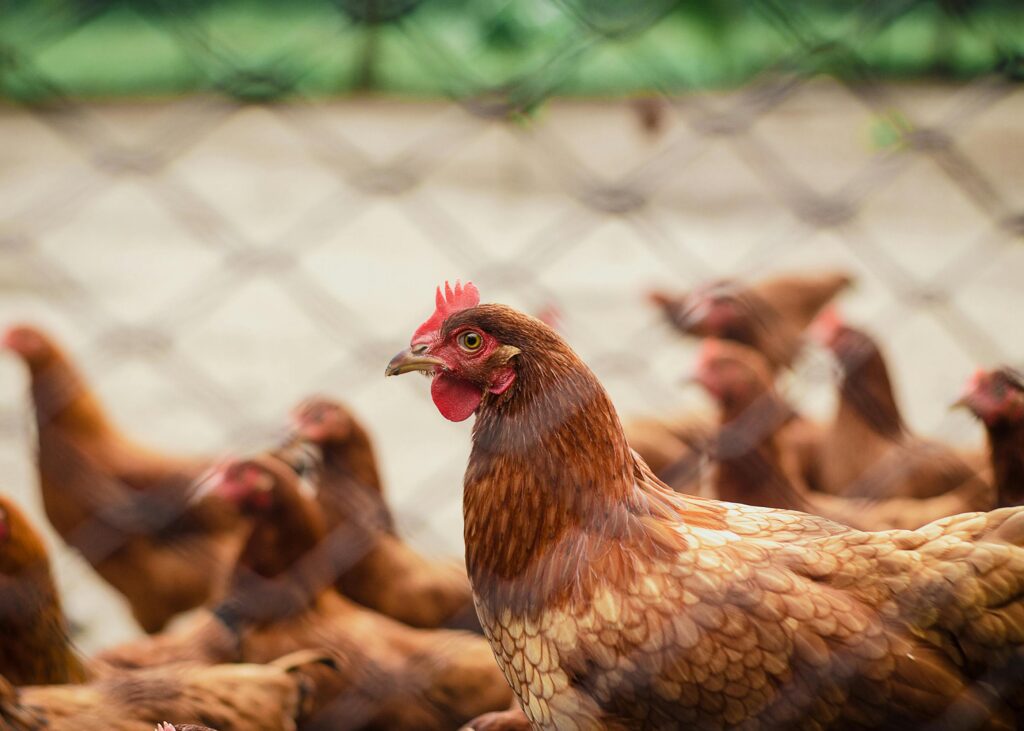
Farmers prefer to observe other feeding methods or visit a nearby poultry farm and find out how other farmers blend cost-cutting feed systems without compromising on bird health.
If procurement and management of the feed are not well organized, rising costs will always remain a persistent issue in poultry farming.
Environmental and Waste Management Issues
Waste management is another significant issue with poultry breeding. A medium-sized chicken farm generates massive amounts of litter, droppings, feathers, and other wastes that need proper disposal.
Unless it is properly managed, poultry manure can emit foul smells, attract pests, and even spread diseases. In addition, poor waste management leads to environmental pollution, which usually lead to conflict with neighboring communities.
As pressure mounts on sustainability, it is becoming profitable for farmers to transform poultry waste into biogas or organic manure. The farmers can turn the table on this by taking a cue from an environmental-friendly waste management system of a poultry farm in my area.
The initial cost of such systems is, however, substantial, and hence it is a call that is difficult for small poultry businesses. Market Fluctuations and Price Instability
Even if a chicken farm is operated appropriately, farmers are faced with fluctuating market prices. The market price of eggs and poultry meat also varies with demand based on season, demand, and availability from other protein sources such as fish or mutton.
Demand is likely to surge high during festival seasons and weaken during lean seasons. Farmers are then faced with oversupply and low prices. The majority of farmers look for new markets, often looking for a poultry farm near me that has managed to have direct customer relations.
Uncertainty in prices not only affects profit but also discourages new entrants from producing poultry. Having long-term contracts and building good customer relations are required to overcome this hurdle, but it calls for effort and time.
Poultry Farming Solutions
Strengthening Biosecurity and Vaccination
To reduce the risk of poultry disease, farmers must have effective biosecurity systems in place. This will include limiting movement of visitors within the poultry houses, proper cleaning of equipment, and distribution of protective attire to employees.
Vaccination regimens should likewise be followed strictly to prevent dominant infection. It is convenient for most poultry farmers to visit a neighboring poultry farm that has implemented vaccination programs and take lessons from them.
Farmers are required to document vaccinations, health checks, and mortality rates to track the overall flock health. Clean drinking water and good ventilation for housing also reduced disease outbreaks.
While such preventive measures require constant effort, they significantly improve the survival rate of chickens and enable long-term profitability of any chicken farm.
Cost-Effective Feeding Policies
Feed cost control is another important procedure for poultry farm profitability. It is possible for farmers to minimize costs by incorporating materials available locally, such as maize, broken rice, or groundnut cake, to supplement commercial feed.
The second effective way is to produce feed on the farm, balancing nutritional needs against accessible and affordable inputs. Farmers mostly observe a poultry farm near me in order to understand how others effectively use feed without compromising bird growth and egg production.
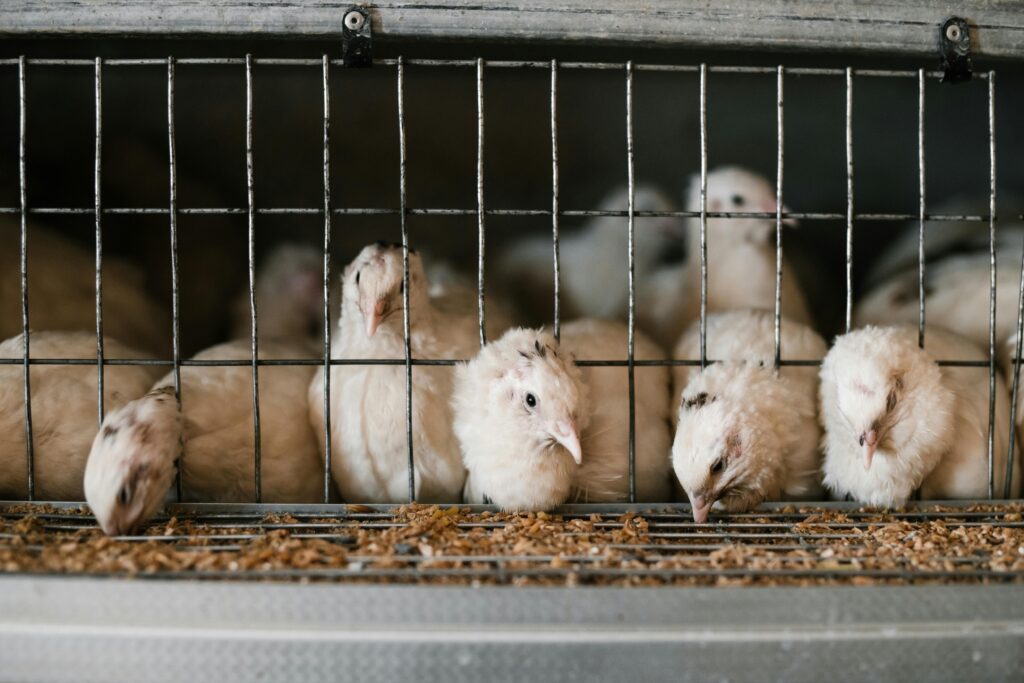
In addition, farmers may also utilize feed additives such as enzymes and probiotics to maximize digestion and reduce waste. Proper management of feed optimizes the quantity of feed that is converted into meat or eggs, which enhances farm profitability.
Farmers are able to safeguard their chicken farm against inconsistent cost fluctuations by following closely feed formulation and market prices.
Sustainable Waste Management Solutions
Proper waste management is not just for sanitation but also for acceptance by society of poultry rearing. Instead of viewing waste as a problem, farmers can turn poultry litter into something of worth.
For example, dried chicken manure is an excellent organic fertilizer that can be marketed to vegetable growers. Some people even utilize poultry waste in the generation of biogas, supplying power for farm operations.
Those farmers who are interested in such practices typically visit a poultry farm nearby me that has sustainable practices to learn hands-on about effective solutions. Farmers, in the process of adopting the same, not only reduce environmental pollution but also create an ancillary income stream.
Although the initial heavy investment in waste processing plants may be needed, the long-term benefit in terms of sustainability and profitability justifies it.
Market Diversification and Branding
To balance market price fluctuations, farmers must focus on diversification and branding. Instead of selling via wholesale markets, poultry farmers can sell directly to consumers, restaurants, or local shops.
With increasing customers seeking a poultry farm near me online, there is scope for building trust through word-of-mouth marketing, social media, and digital advertising. Naming a chicken farm organic, antibiotic-free, or free-range can compensate farmers with better margins.
Selling eggs in sanitized cartons with farm labeling is another way of keeping the regular clientele. Small farmers can fetch good prices and sell in larger markets through cooperative organizations or associations.
By diversifying marketing channels and establishing a strong brand name, poultry farming is less vulnerable to market fluctuations.
FAQs on Poultry Farming
1. What is poultry farming and why is it important?
Poultry farming is the breeding of domesticated birds such as chickens, ducks, or turkeys for egg and meat production. Chicken rearing is most common among these due to their high demand by consumers.
Poultry farming is important as it serves to provide low-cost protein-rich food, provide employment opportunities, and yield regular returns to farmers. Unlike big livestock, poultry requires less space, less investment capital, and shorter production time, thus a highly lucrative venture.
People will seek to find a nearby poultry farm where they can buy fresh eggs and meat directly from the producers at a quality and sanitary standard. Poultry farming is also crucial in the provision of food security because it offers nutrients that are essential to communities at a relatively low price.
To farmers, it is an enterprise that yields quick returns and that can be scalable, whereas to consumers, it gives a consistent chain of nutritionally balanced, protein-based food.
2. How do I start a chicken farm on a tight budget?
A chicken farm can be started with little capital if you plan well. The initial step is to determine whether to specialize in broilers for meat production or layers for egg laying. It is wise to begin with a small flock, perhaps 200 to 500 birds, so that you can develop management before scaling up.
Low-cost but efficient poultry housing, utilization of locally available feed ingredients, and proper hygiene should take precedence for farmers. Field trip to a local poultry farm can give firsthand experience to the newcomer as far as housing structure, formulation of feeds, and marketing strategy are concerned.
The newcomer farmer can even opt for government schemes or agriculture loans given for subsidizing small-scale poultry farming. With low operating costs and reinvestment of profit in growing, newcomers can establish their farms gradually.
The key here is consistency—proper feeding, healthcare, and marketing will cause any low-investment chicken farm to generate profit regularly in the long term.
3. What are the major issues in poultry farming and how to overcome them?
Although the rearing of poultry is profitable, there are issues such as high incidences of disease, rising prices of feeds, and unstable prices of poultry products.
Disease outbreak losses can be catastrophic, hence the necessity for farmers to adopt stringent biosecurity measures, including vaccination programs and good sanitation measures.
Feed costs, which contribute about 70% to costs, can be managed by mixing local components or by on-farm feed production. Instability of market prices can be managed by branding, direct sales to the consumer, and block contracts to wholesalers or restaurants.
The majority of farmers usually go to a poultry farm near me for actual solutions to such problems. Waste management is also an issue, but turning poultry litter into organic manure or biogas can turn it into an alternative source of income.
With preventive health care, cost-saving feeding, and diversified marketing, farmers are able to manage the most common problems in poultry farming.
4. What is the role technology can play in modern poultry farming?
Technology has transformed modern poultry production through increased efficiency, reducing labor, and promoting improved bird welfare. With automated feeders, drinkers, and environmental-control systems, farmers can manage large flocks with minimal effort.
Intelligent monitoring devices can monitor bird health, egg laying, and feed consumption in real time, allowing farmers to base their decisions on data. For example, automated housing of a chicken farm provides effective ventilation and heat, decreasing stress and productivity.
Most potential farmers look for a poultry farm nearby that is equipped with the latest equipment to realize how technology is utilized in day-to-day activities. Although automation may be costly at the beginning, eventually, there will be less wastage, increased efficiency, and increased profitability.
In today’s competitive market, technology adoption is not an option but necessary for effectively scaling up poultry farming.
5. Where is the nearest best poultry farm where I can study or buy products?
Selecting a good poultry farm near you depends on your purpose—whether studying poultry management or buying fresh produce. To learn, you may find farms with training programs or allow farm visits, where you can observe the housing systems, feed management, and disease control measures.
Farm visits provide firsthand experience that cannot be gained through books or videos. If you are a consumer, searching online or asking around in local markets typically identifies credible farms in the locality.
A good chicken farm will be likely to be clean, treat birds well, and provide quality eggs and meat. Farmers’ associations and agriculture extension offices may also guide you to good poultry farms in your area.
Selecting an appropriate poultry farm, either for training or for fresh supplies, guarantees you with improved knowledge, healthier output, and closer ties with communities.
Conclusion
Poultry rearing has emerged as one of the most profitable and sustainable farming activities of the twenty-first century. Ranging from the provision of consistent income opportunities to guaranteeing food security, poultry farming is central to rural development and the overall economy.
As we have discussed, raising chickens is not the only aspect of a successful chicken farm—right methods like breeding, housing, feeding, biosecurity, technology use, and smart marketing are also required. All six potent methods can convert small-scale activities into a successful business if applied on a regular basis.
At the same time, issues such as rising feed costs, disease risks, and market volatility cannot be ignored. However, with actual world solutions in the form of biosecurity practices, environmentally friendly waste management, diversified market outlets, and the use of high-tech technology, all these issues can be overcome effectively.
For an expansion-minded farmer, a local poultry farm is an excellent place to learn practical know-how and adopt tested methods from seasoned professionals in the poultry farming fraternity.
Whether you are a beginner with a small flock or a seasoned farmer seeking an expansion, the opportunities in poultry farming are enormous. With the combination of age-old concepts and modern techniques, you can evolve a sustainable and profitable poultry business.
It is the time to take the first step—start on a small scale, learn at each juncture, and finally diversify your farm. Poultry rearing is not just a business; it is a path to economic self-reliance, community development, and food self-sufficiency.
